How Much Does It Cost To Bum A Cigarette?
A Neo-Marxist Cost-Benefit Analysis Of Bumming Cigarettes
Hint: it’s not worth it.
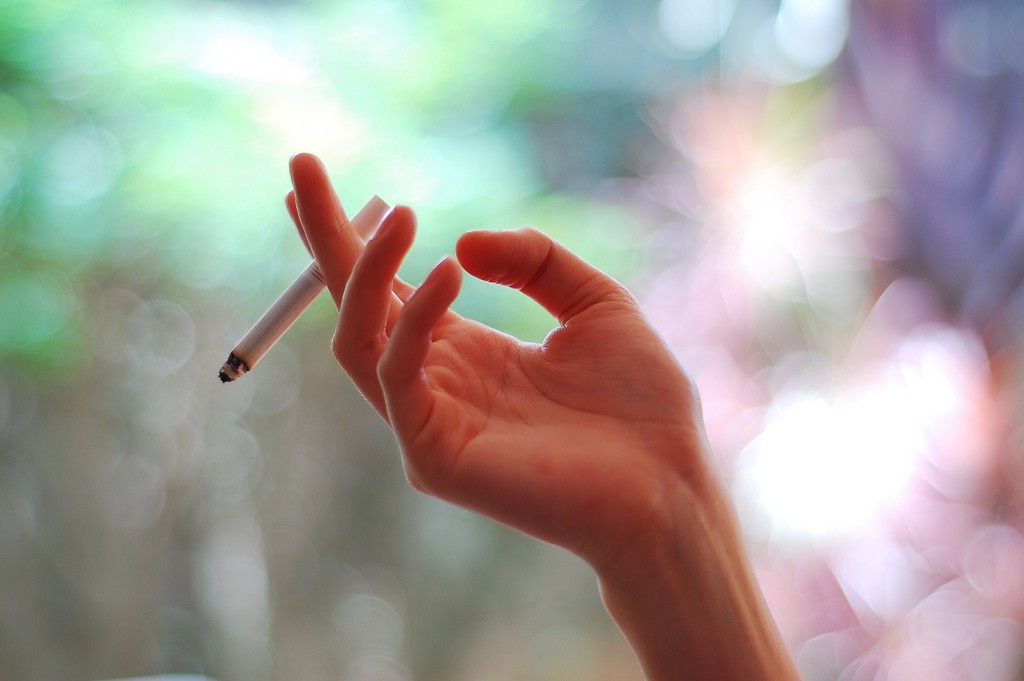
It is a truth universally whatever that someone talking to a stranger smoking outside a bar must be in want of a cigarette (or of the touch of another human on their cold, neglected genitals, but I can’t help you with that).
No doubt you, like me, have resolved once or twice to quit smoking…your own cigarettes. If you’re only smoking socially, buying a pack of smokes seems like a temptation to relapse and a sure waste of money, not only because packs are expensive, but because you’re inevitably going to give out half of its contents to people who’ve quit smoking their own cigarettes.
Given these conditions, bumming cigarettes seems like the only fiscally responsible option. You can ask your friends, but they might be off the nicotine for real, or tired enough of your mooching to cut you off because they “thought you were quitting.” On to the kindness of strangers. How much time should you spend conversing with them because you feel it’d be rude to take their cigarette and jet off? At what point does does your politeness become foolishness?
Conversing with someone you don’t actually want to talk to in exchange for a cigarette is a kind of compensated labor, just like everything in our neoliberal world. Let’s assume the minimum wage is a decent approximation of a fair wage — that’s a joke, people. But it is the minimum value of your labor in capitalist society. You’re being compensated in the form of cigarettes, so we can quantify that wage using the value (in this case the price) of a cigarette.
Thus, a ballpark for how much effort you should make to acquire a cigarette can be the maximum length of time you can spend on this endeavor and still make minimum wage. Let’s call that unknown number B, for “bum” or “broke-ass” or whatever other description seems fitting. B (in minutes) is equal to the price of a cigarette divided by the minimum wage per minute. This is just one way to calculate B. If you’re a woman, you probably spend enough time doing emotional labor that to you, B = 0. If you’re up for just a little more emotional labor, read on.
Cigarette prices and the minimum wage vary by and within states, so I’m just going to use New York City as an example because I live there and I want to know what the cost-benefit on my cigarette-bumming habit is. According to The Awl’s most recent cigarette price roundup, the price of a pack of cigarettes in New York State averages $12.60. There are 20 cigarettes per pack, so you’re paying 63 cents per cigarette. Maybe when you see it that way, saving a measly $0.63 isn’t worth wasting any time at all, but this stuff adds up (like Pringles, you never stop at one), so let’s press on.
What a Pack of Cigarettes Costs, in Every State
In New York City, minimum wage is $10.50 to $11 (in the rest of the state, it’s $9.70), but let’s take $10.50 as the bare minimum. That’s 17.5 cents per minute. Yes, when you look at it like that it IS practically nothing.
Thus, B(New York City) in minutes = price of one cigarette ÷ minimum wage per minute= 63 ÷ 17.5 = 3.6 minutes, or 3 minutes and 36 seconds. This seems like a good window for a brisk New York exchange: ask for a cigarette, light up, banter about the Second Avenue line, shit-talk de Blasio, take your leave. It’s like making a subway friend. Rudimentary math and common sense both tell us this is the most we owe someone for a passing courtesy.
I also calculated B for every state where the Awl was able to obtain cigarette prices, since I love to take things too far. From Hawaii, clearly an affordable, pro-worker paradise, to bleak Montana, B can range from 1 minute and 44 seconds to 5 minutes and 2 seconds — all very short times in the scheme of things. Expensive though cigarettes may be, one more or less isn’t actually worth that much.
But this is more than just an age-inappropriate fifth grade math problem. First, the elephant in the room here is that “smoking socially” usually means smoking while drinking. Forget about bumming a cigarette, having a brisk exchange, and exiting gracefully: drunk you is not going to take 3.6 minutes to do anything. Do you really want to gather your things, weave through people make your way outside (possibly stopping along the way for a couple of forced chatty conversations), find the smokers, choose which one to walk up to…I’m getting tired, sobered-up and hell-bent on a slice of pizza just thinking about it.
In all seriousness, though, this particular solution to the problem of figuring out how much your time is worth assumes that time is money, or that it’s equivalent to money. Saving money might indeed allow you not to waste your life on earning a living, but let’s not pretend cutting back on tiny purchases (i.e., forgoing a $2.75 coffee on the advice of an article by a “financial advisor” titled “How I Saved $10,000 In A Year”) bumps anyone up into the next tax bracket. The idea that anyone who’s not rich is irresponsible for wanting small comforts is a puritan scam.
Even without considering that, time can also be defined as moments of your life that you’re never getting back. Why spend even 30 seconds on a fool’s errand? Just skip the nicotine, have another drink, and leave the overthinking for the morning.
A Poem by Alice Bolin
Clueless Insidious
Where I live it is often impossible to turn left.
I have developed certain strategies
when leaving my apartment complex
to do things the slower and easier way,
to go south by going north, and still
I fuck other motorists over flamboyantly.
In fact my car is pink and conspicuous.
It is warmish mountain June, the floors
are lined with trash, my windows
don’t roll up, and I have a headlight out
so we try to take back streets across the river.
No one has ever been called a superficial
space cadet in this car and I’m about
to change all that. No one has ever
been called selfish, not to their face,
in this car. Videos burnt into my sight:
I get home from work I close my eyes
and see a hand setting infinite waters
on a restaurant table. Or rolling the silverware
my mind loops scenes from the movie.
Almost any word can trigger it: travesty,
technical, muscles, sporadic, Coke, drive.
I just don’t want to get pulled over. Does my
goodwill count for nothing, that I
fully intend to brake for animals, that I didn’t
skin a collie to make my backpack?
A cop comes the other way on the bridge
but there’s not much he can do
about my headlight now. It’s later
somehow than it should be, at night
and into the summer. I see former stoplights
with perfect clarity, when we were talking
about the band, the movie, the actor’s face —
previously agreed on, it’s all good, so good
that its goodness is neutral. But getting
off the freeway makes you realize
how important love is. Rewinding
every friendship every June of my whole life,
this movie might be my favorite,
if I can have a favorite.
Alice Bolin’s essay collection, Dead Girls, is forthcoming from HarperCollins.
The Poetry Section is edited by Mark Bibbins.
Eating Everything
The Adventures of Liana Finck
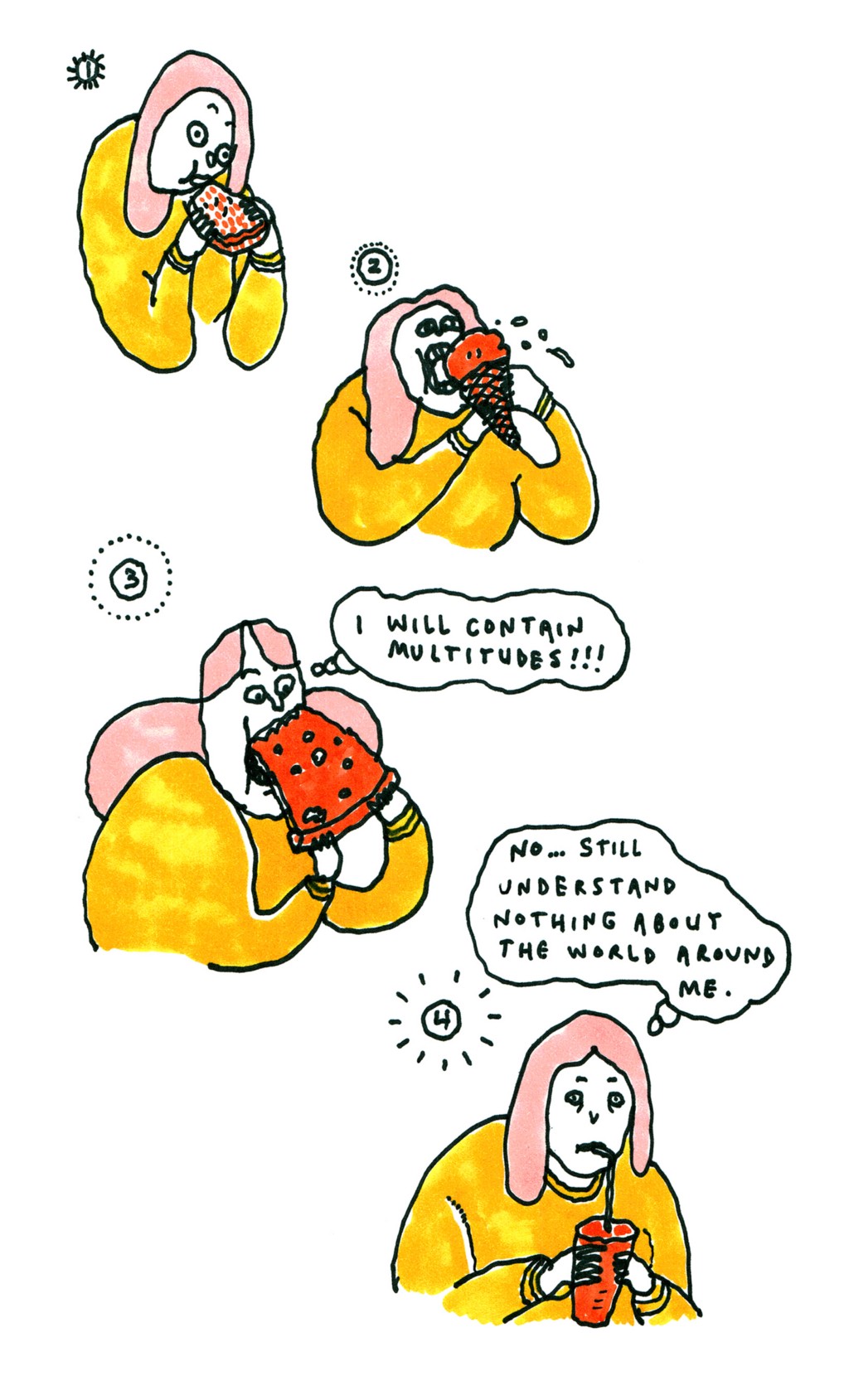
Liana Finck makes autobiographical cartoons, and eats a lot when she is worried.
Geotic, "Actually Smiling"
I’m wide awake, it’s mourning.
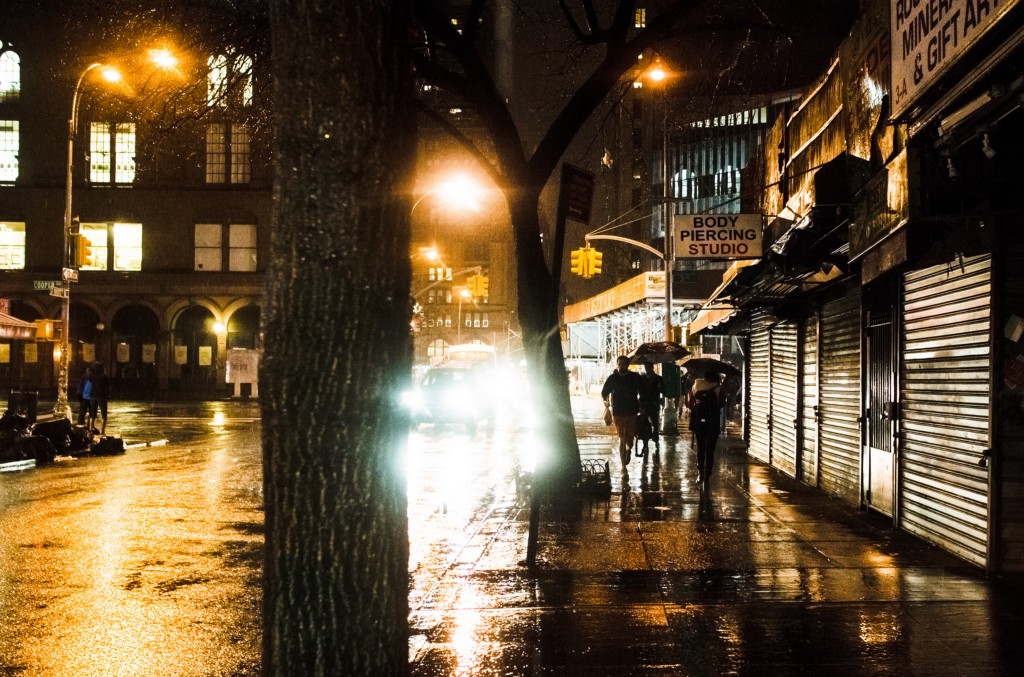
Have you had trouble sleeping lately? You’re not alone. No one is able to make it through the night anymore. Maybe it’s the erratic weather we’re having. Maybe it’s the bad cold going around. Or maybe there’s something else, some other gnawing anxiety that causes you to pitch forward in at 3:47 and spend the next two hours in a state of dread and anguish. What could it be? Hard to say, really. Maybe we should just wait and see if it resolves itself one way or another.
This song is very pretty. I don’t know if it will make you feel happy or sad, but it won’t make you feel hopeless, and I think we can all agree that is the one feeling we’ve got a surplus on at the moment, so anything different is good. Enjoy!
New York City, January 24, 2017
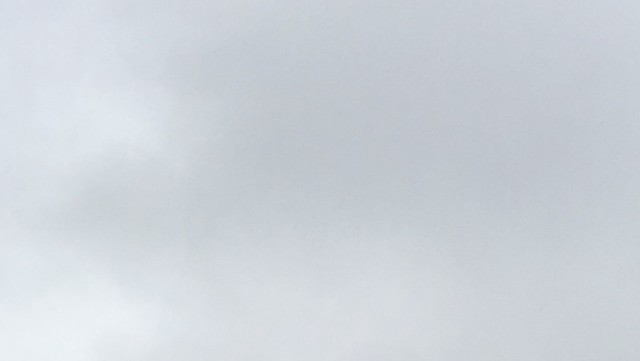
[No stars] The wild gusts and deluge had faded to raw drizzle and a wind that pushed back the sweatshirt hood raised against it. The schoolyard was closed and the children in their puffy outerwear crowded toward the doorway of the building instead. The light through the porthole on the viola lesson was medium gray, seemingly bearable. But the full soaking rain came back, waves of it, hour after hour, delaying and then dismissing any thought of heading out into it again. Dark came as fast as if it were still December, and the pattering against the glass carried on into the night without ceasing.
Thundercat, "Show You The Way (feat. Michael McDonald & Kenny Loggins)"
We’re all together again for the first time.
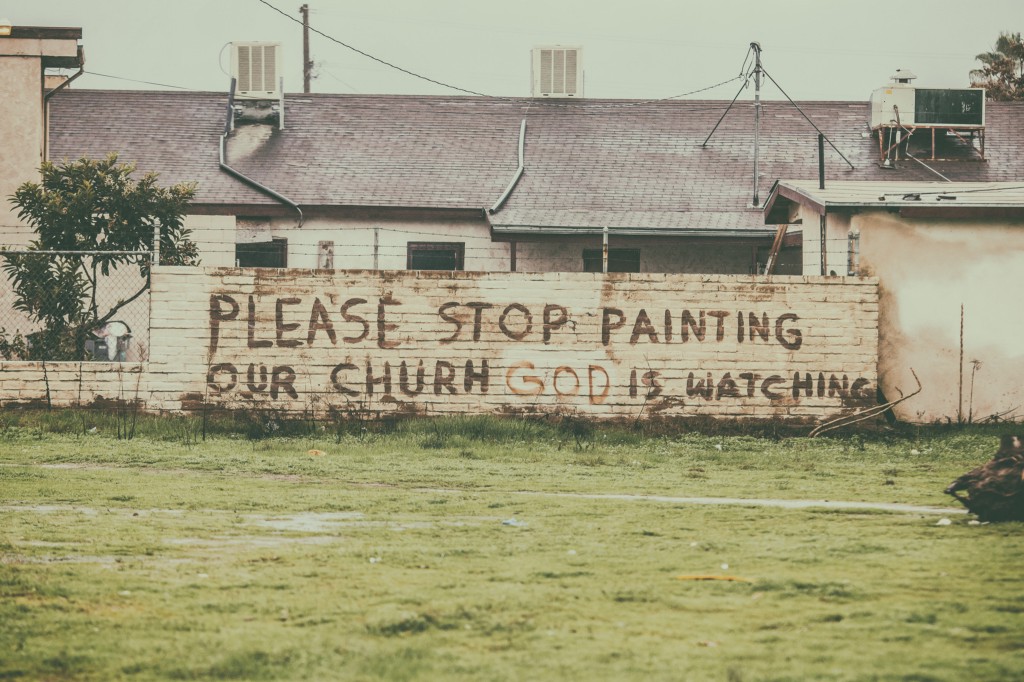
As someone who spent several years warning the world that it is all awful out there I thought it would be much more comforting when everyone finally came around to my point of view. It is not. Everything is terrible and only getting worse and now that you know it you’re all starting to bum me out. If there were a way I could bring us back to the time where I bore the burden alone while you wandered about your world without understanding just how horrible it all was I would gladly condemn myself again to that solitary torture, but unfortunately there is no going back. You’re all in here with me now and, having been a resident for quite some time, I can tell you it doesn’t get any easier as you go.
That said, there are still occasional breaks in the day where you don’t mind it as much for a few minutes. They usually happen to music. Try some Thundercat and see if that helps.
Donald Trump Sounds Like a Tween on Summer Break
School’s out.

President D*nald Tr*mp did a brief interview with the New York Times Tuesday where he chatted about his first few days in the White House. The whole piece is worth reading, but what really caught my eye were the moments where our president comes off like a tween on Summer break. You know that weird pocket in late middle school where you’re too old for a trip to the playground, but too young to apply for a job as a chipper cashier? Sure, you can babysit or watch the neighbor’s dog when those gigs pop up, but it probably won’t fill your days from 9–5. So unless you’re in a pool or first-kissing a crush, your rightful place is on this couch trying to beat your fastest time in a jetskiing game you got for your birthday seven years ago. Your mom just needs to accept that.
A Homebody Finds the Ultimate Home Office
This also seems to be the attitude of our current commender-in-chief. Don’t take my word for it, though. Maybe you’ll encounter these descriptions and think, “Sounds like a guy who’s on top of things to me!” We contain multitudes.
His morning routine kind of bleeds into his evening routine.
…his meetings now begin at 9 a.m., earlier than they used to, which significantly curtails his television time. Still, Mr. Trump, who does not read books, is able to end his evenings with plenty of television.
If he wanted to go outside, he’d be outside.
For decades, he has lived in a penthouse apartment on the 58th floor of Trump Tower and taken an elevator down to the 26th floor, where he has a corner office with views of Central Park. Many presidents have complained of being cooped up inside the White House — George W. Bush in particular said he missed the outdoors — but Mr. Trump can go for days without breathing in fresh outside air.
Being alone doesn’t mean he’s lonely, for the record.
Mr. Trump’s wife, Melania, went back to New York on Sunday night with their 10-year-old son, Barron, and so Mr. Trump has the television — and his old, unsecured Android phone, to the protests of some of his aides — to keep him company.
But if you’re going to the store could you pick up something good?
The kitchen has been stocked with the same types of snacks that Mr. Trump had on his private plane, including Lay’s potato chips.
He’s planning to put some posters up.
The president spent a part of Tuesday poring over artwork from the White House collections, settling on a portrait of Andrew Jackson — America’s first populist president, who has been invoked by Mr. Trump’s aides as inspiration — to hang in the Oval Office.
I rest my case.
Weekend Service Changes
We apologize for any inconvenience.
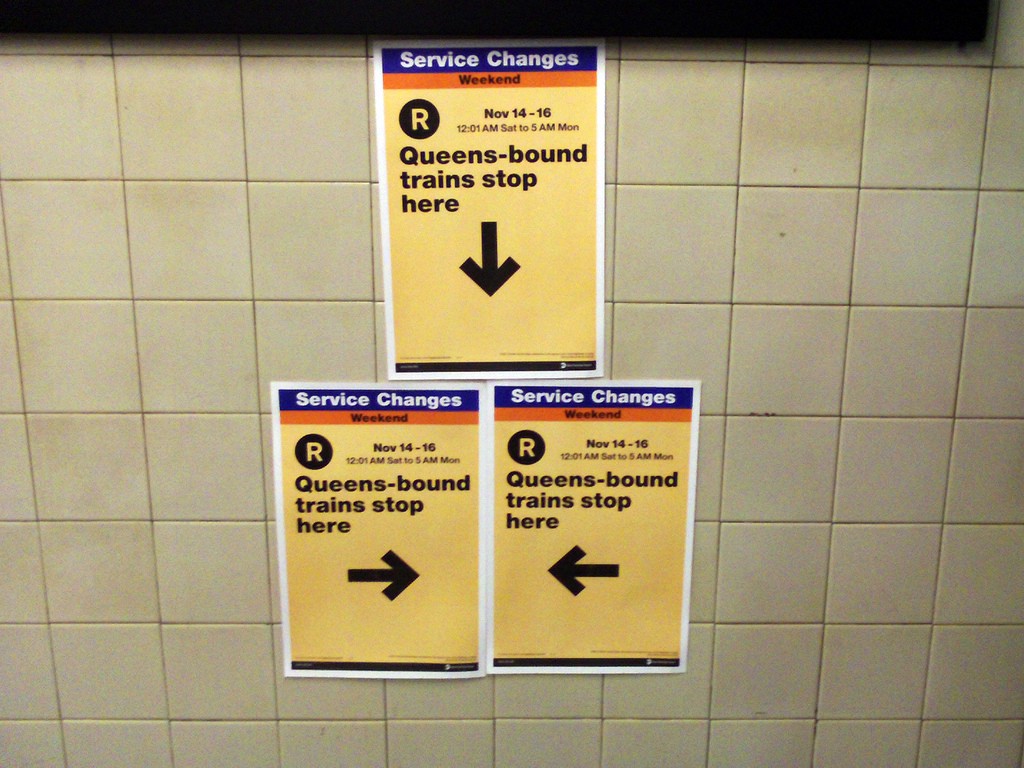
As a 24/7 transportation system, the MTA must occasionally make minor adjustments to its schedule in order to deliver world-class performance, and to prevent the stations from collapsing under the weight of accumulated urine. Here’s what to expect this weekend:
3 trains will skip Grand Army Plaza and Bergen St., then run express from Atlantic Avenue to New Lots Avenue in both directions. Between Chambers St. and 14th St., the 5 train will run on the 3 line. As an alternative, take the G train, which runs on the C line. The G train probably runs on the J line. Aces are 2s. Jacks are wild.
The 5 train will skip every other stop between Nevins St. and Union Square, then run express to Grand Central, where it will be held in the station for 23 minutes with no announcements. When you give up and exit the train, you’ll politely ask an MTA employee what’s going on. She will blankly stare at you before responding, simply, “Uh….” A second MTA employee will offer an indignant “I know as much as you do” before looking down at his phone.
The 4 train will stop at 42nd Street, and then, for reasons even we don’t understand, run on the D line to 145th Street. As an alternative, mumble something under your breath about de Blasio, before being reminded by your friend that it’s mostly the state’s fault. Then take an Uber.
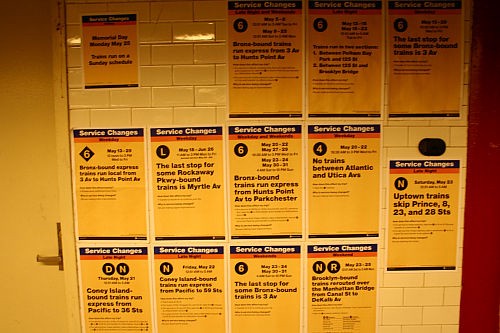
The 9 train will resume service where it left off in 2005. Check the MTA website to see where we think it might go.
The C train will appear to be running smoothly until a garbled announcement that the train won’t stop at…was that your stop? Did he say your stop? Did anyone hear what he said?
The Q train will terminate at 96th St. While you admire the artwork at the sparkling new station, remind yourself that Shanghai built four new mass-transportation hubs in the last three weeks at one third of the cost of three new stops on 2nd Avenue. Smile ruefully as you contemplate America’s inexorable decline.
Due to a monthlong Andrew Cuomo press conference celebrating the opening of the three new stops, the Q will be running with intermittent delays.
There is no P train. There never was a P train. Who told you there was a P train? How long have you been standing there?
On Saturday from 1–4pm, the intercom on all D trains will be left on, producing a barely perceptible buzzing noise that only you seem to hear. As an alternative, puncture your eardrums and decorate the train car with your blood.
The J train will take an excruciating 17 minutes to cross the Williamsburg Bridge. As an alternative, walk to Brooklyn instead, and as you’re taking in the majestic skyline view, realize that you really don’t take advantage of the city the way you should. Impulse-buy a BAM membership you’ll never use.
The A train will appear to travel back in time to 1960 between Hoyt-Schermerhorn St. and Rockaway Boulevard, but that’s just because the train cars are 50 years old and there was a guy in a fedora sitting across from you. Snap yourself out of the delusion by grimacing at a Manhattan Mini Storage ad that’s trying way too hard.
Train arrival time will not be available on the R line due to an expected electronic malfunction. All countdown-clock kiosks will display a flashing Burberry ad instead. Visit burberry.com for more information.
Shuttle buses will be available, just generally.
Due to a passing rain shower, the L train will sit under the East River for 21 minutes. While you wait, ponder the Dominican woman cutting her nails, the black hipster listening to EDM you can somehow hear through his headphones 15 feet away, and the white businessman taking up two seats while a pregnant woman lingers nearby. Consider that the New Yorkers of all races, colors and creeds you encounter on the subway every day are a direct repudiation of the monster in the White House, and yet that on an individual level, they’re all so goddamn infuriating.
The 7 train will run normally.
We apologize for any inconvenience.
Follow Benjamin Hart on Twitter, please.
The Specter of a Sword
Fears of forced conversions to Islam in Borneo

This past summer, outside a bar in Kuching, the capital of Sarawak, a region on the island of Borneo, a couple of Dayak (indigenous Borneans) dudes sat quaffing Tiger beers and talking about forest spirits. Beginning a few centuries ago, many Dayak tribes converted to Christianity, and a few to Islam. But syncretism runs deep in Sarawak, a land built by centuries of largely harmonious trade and immigration of peoples and faiths from China to Philippines to India to Indonesia. The region is officially part of Malaysia, but ruled by a mostly autonomous local government, which manages its unique diversity by outwardly reveling in it, building up a national self-image and ethos of multi-faith, multi-cultural tolerance and cooperation. The young men spoke of fathers or uncles, who while professing Christianity, believed that when they returned to the jungle they could still see the eyes of far older spirits in the trees.
Malaysia, despite a long history of Malay Muslim rule on the Malay Peninsula, is only about sixty percent Muslim thanks to the presence of large Chinese- and Indian-origin communities practicing their own and indigenous peoples practicing traditional faiths. The nation outwardly professes religious freedom in recognition of its own holistic diversity. But it still grants many special privileges and protections to Islam, the majority or plurality faith in most of its thirteen states and three federal territories, and official religion of the nation. The sitting government seems to favor increasingly aggressive politics, protecting and favoring Islam above other faiths.
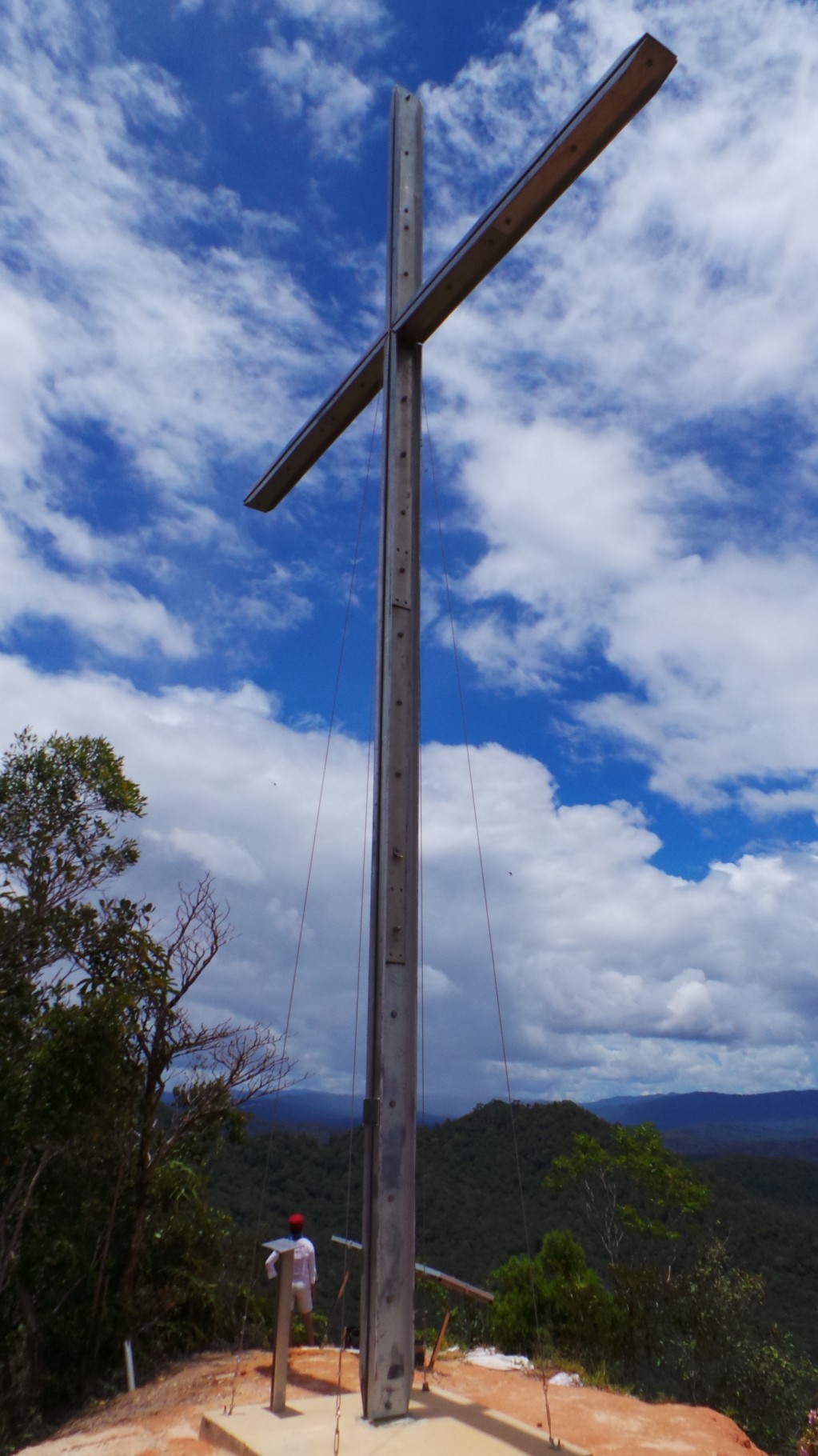
But Sarawak, the only Malaysian state with a Christian plurality, runs counter to this national Islamic focus with its identity built firmly around diversity. Candid conversations about faith, its idiosyncrasies, and its cross-cultural harmonies may be fraught in the wider country, but there they are not all that uncommon. Yet there is a growing fear that the rest of Malaysia wants to change that — to remake Sarawak in its image, building a cultural monolith.
“There is a sense that [some] ethnic groups are under pressure to become Muslims and join the rest of Malaysia,” explained James Chin, who studies Malaysian politics and the interplay between national political forces and Sarawak at the University of Tasmania. There’s a feeling that “their aggressive Muslim brothers and sisters are coming in from the [Malay] peninsula to potentially upset the balance” of Sarawakian diversity.
In some ways, this fear is unique — an offshoot of the historically separate state’s five decades of inclusion in a nation long (and increasingly) at odds with its culture and faith. But in a grander sense it’s a globally resonant fear. Throughout history, many (in the West at least) have learned the narrative that religions spread through violent assaults and official coercion from outsiders. This story is especially entrenched around Islam (“spread by the sword” in our mythos). A common populist fear in many non-Muslim nations today — especially in Europe and America — is that a wave of Muslim immigrants will overwhelm them and somehow (almost magically) transform the countries they touch into Islamic states.
Sarawak’s fears of religio-cultural siege are not unfounded, as there are clear signs that Islamic groups are aggressively promoting their faith in the state with little restraint from the local or federal government. To any paranoid parties looking in from the outside, this may seem to drive home the legitimacy of widespread fears of spiritual assault. But there’s something soothing in the example of Sarawak as well: it’s a case study in how poorly this sort of aggressive conversion works — of how bogus, for the most part, the threat of Islamization is.
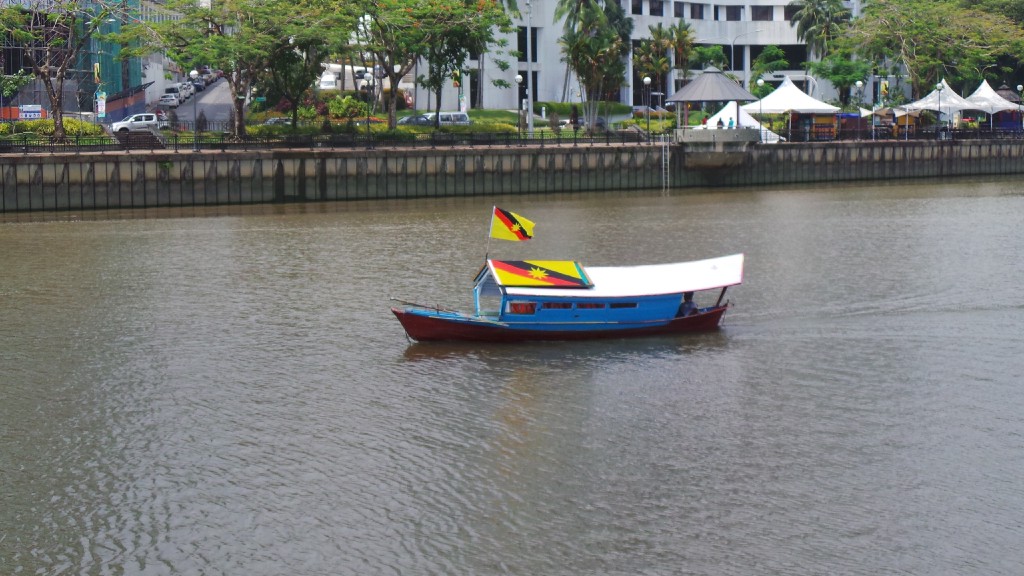
According to Chin, widespread fears about religious aggression spread in Sarawak within the past few years. That may seem odd, as Malaysia has always had some weird attitudes about identity and Islam: Article 160 of its constitution, created in 1957 for the independent Federation of Malaya (and only slightly adapted in 1963 when Sarawak, Sabah, and — briefly — Singapore joined Malaya to form Malaysia) dictates that all ethnic Malays are Muslims. In most of the country, it is illegal for non-Muslim practitioners to proselytize to Muslims (but proselytizing the other way around is just fine), conversion to Islam is necessary when a non-Muslim marries a Muslim, and conversion away from Islam is impossible in all but a few cases. The past decade has seen an uptick in the power of religious courts, which have jurisdiction in many states over family law and can prosecute Muslims for improper religious observance. The ruling government has also gradually recast itself as expressly favoring Islam, taking on the role of protector and promoter of that religion only.
Sarawak’s autonomy and longstanding neutrality on religion has shielded it from wider issues. Chin said Sarawak clearly breaks from national Muslim- and Malay-first policies, and local Islamic authorities collaborate with their non-Muslim counterparts, exercising sensitivity to things like age and consent in registering conversions. Last year the state’s courts set a major (but limited) precedent by allowing a man converted to Islam at eight years old (because his parents converted, which under local law made their children converts too) to revert back to Christianity — although only because he could prove he’d never actually practiced Islam.
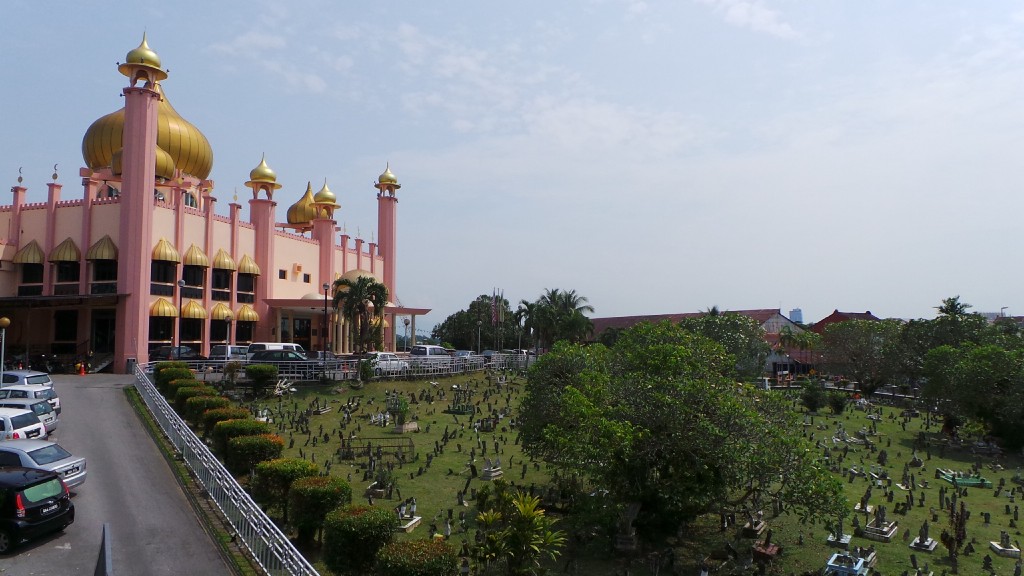
Recently though, reports have cropped up of Islamic groups from outside the state proselytizing heavily, especially in poor rural areas where some Sarawakian politicians claim they’ve been coercing locals into mass conversions with the promise of material benefits or even just cash.
“They’ve been told that if they convert to Islam they can get more benefits under Malaysian affirmative action,” said Chin.
More galling to many are stories of young students being targeted for conversion by Muslim teachers from the peninsula. Local gossip and some publications paint this as part of an express plan by mainlanders to flood Sarawakian schools with Islamic influence, bringing children up saying Muslim prayers and learning Muslim values, history, and an Islamic national message. (Some groups also allegedly explicitly target Sarawakians studying outside the state for conversion, then send them home to influence their peers towards Islam themselves.)
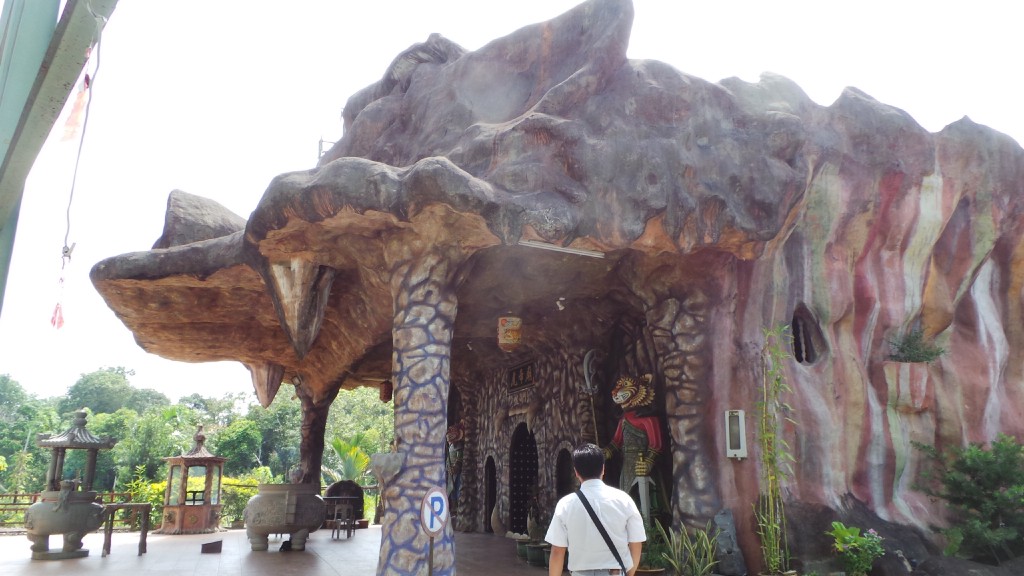
Given the state’s involvement in many of the schools in question, and the perceived inaction of federal and local officials (alongside perceived slights against non-Muslims and signs of Islamic values on state websites or in their buildings, like not allowing women in short skirts into federal facilities for being immodest in the eyes of Islam’s faithful), Sarawakians and their allies gossip about state government’s complicity in this trend. “Conversions are taking place in schools but [the government] are denying it,” Rita Chew of the Archdiocese of Kota Kinabalu in the Sabah, another autonomous piece of Borneo, which has long had a Muslim plurality, but also a strong tradition of religious diversity, and has reportedly faced similar pressures on its large non-Muslim populations to those in Sarawak, told a regional Catholic newspaper last February. “Christian parents are discovering their children are learning Islamic prayers.”
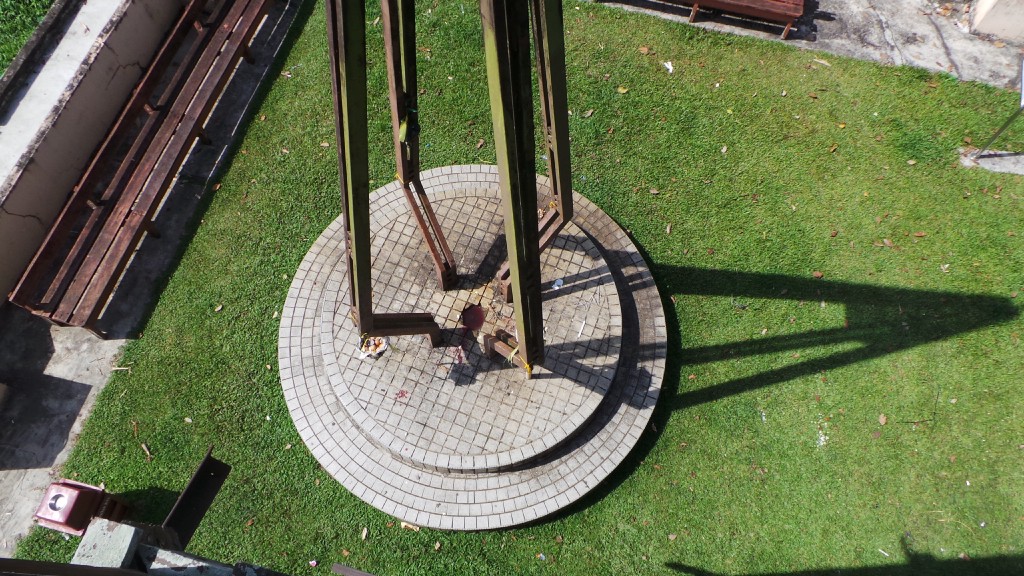
“As far as I know, there is no official policy” to send over Muslim teachers, said Chin. He notes there have been documented cases of attempted conversions where Sarawakian officials just send the teacher to another school rather than remove them from the system. But Chin voiced his suspect that mainland Islamic organizations have encouraged Muslims with a proselytizing bent to volunteer for Sarawakian posts, which are not popular given their often remote locations — Sarawak is the largest but least densely populated state in Malaysia and viewed as underdeveloped by those almost 400 miles away on the Malaya peninsula. Chin postulated that relevant officials have gone along with this for need of teachers. He also suspected that local Islamic and political organizations have tacitly allowed proselytizing groups to operate in the state, intervening only reactively whenever something egregious happens, out of a desire not to spark conflict with federal authorities who may be supporting the spread of these groups.
“The non-Muslim political leaders in Sarawak are quite worried,” said Chin, “but they feel like they can’t confront [national political forces]. So it’s mainly the churches fighting.”
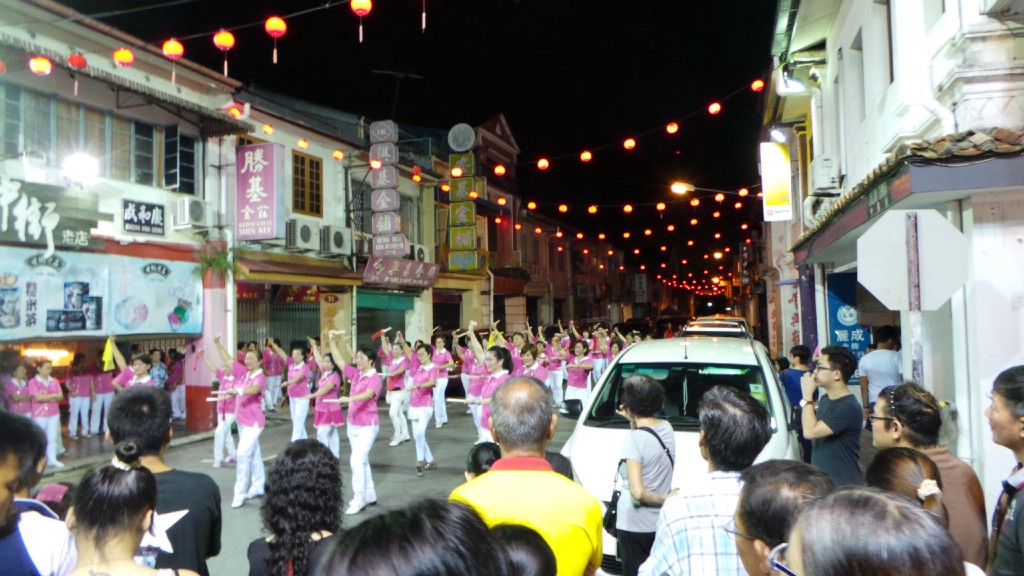
These recent incursions have led to rallies attempting to re-up the sense of religious diversity (or even expressly the Christian plurality) of Sarawak, as well as to political tensions between locals and the mainland. Baru Bian, an opposition politician and Sarawakian rights campaigner, has been especially relentless in calling out the federal state for its complicity, even by inaction, in the spurt of Islamization. “We fear that racial and religions tensions will continue to escalate,” he said in a 2015 statement, “if [Prime Minister Najib Razak] cannot find the testicular fortitude to lead the country out of this festering mess that is a consequence of” his ruling party’s identity politics.
Yet for all the consternation caused by the perceived flood of religious pressure suddenly set loose on Sarawak, and for all the locally high-profile bids at conversion, it’s relatively hard to find cases in which that pressure has succeeded. Chin suspected that some attempts at converting kids at formative ages — like preteens and early teens — may have been successful, but likely would not be recognized by local Islamic institutions. Nor have material inducements convinced all that many rural folk to convert.
Instead, the bulk of conversions in Sarawak are due to marriage. This is not uncomplicated, as often law forces that conversion, and there are many cases in which locals marry soldiers who move them back to the peninsula and then limit their engagement with their old families or faiths. But that’s a decidedly more organic and haphazard process than mass Islamization efforts.
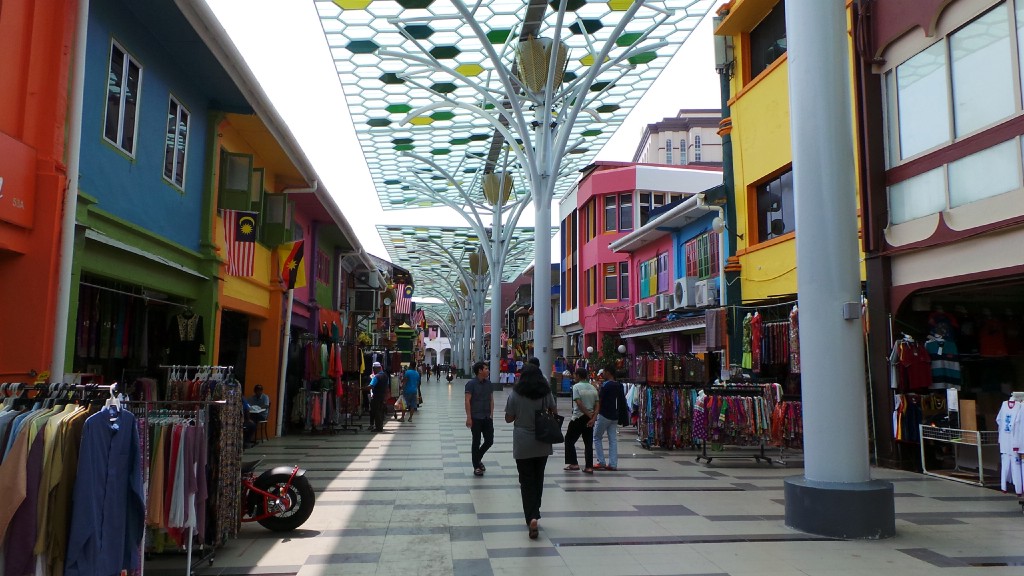
Despite pop histories of conversion at the sword or by the state, this pattern is more in keeping with rigorous historical analyses of trends in conversion. It’s rarely some big push by outsiders or insurgents — those efforts often lead, at their most violent and extreme, to phenomena like Crypto-Judaism or explicit dual faith observance, if that. Instead, slow influence through interpersonal contact or individual action to obtain superior social status drives conversions. Even then, the result is rarely pure (as Malay Muslim proselytizers might want it to be), but a tweaked form of faith fitting local traditions that takes decades to solidify.
None of this means that the Islamizing wave that’s hitting Sarawak isn’t problematic or wearisome. It causes discomfort to many and underlines an increasingly strained relationship with the wider nation. And Chin noted that if the federal ruling party ever takes power over the local Sarawakian state apparatus — which is unlikely given its policies and local realities — then “all bets are off.” They could easily institute a slew of pressures and policies that would make membership in non-Muslim faiths painful and increase the appeal of outwardly orthodox Malay-style Islam to the point of rewriting social incentives and driving a wave of grudging conversion, although even this would likely unfold over generations and with resentment bordering on revolt.
The resiliency of Sarawakian social norms and faith groups against this rising tide of perceived (and at least partially real) Islamic incursion ought to be heartening for many around the world, though. It’s proof of how sturdy a faith — or even a complex, multi-faith order — can be, so long as it’s not failing its adherents. It’s a case study in how little cultures and churches have to fear from outsiders; it’s a message not to worry too much, even about aggressive acolytes from abroad flooding a society. Because without critical failure within a system, or dictatorial ramrodding policies from a state power undermining the system, such incursions may be uncomfortable but they rarely signify any real potency or threat.
Poppy Season
Finally, I’m on board with a bizarre YouTuber

Are you familiar with YouTube performance artist Poppy? Her channel has been around since 2014, and if I had to describe it in one sentence I’d say she makes videos of herself against a plain background. That seems fair. A lot of the time she’ll be repeating the same phrase, or repeating a motion (like raising and lowering her arms). Recently she laid on a floor and asked commenters to weigh in on whether she should stand up or keep laying there.
I’ve had more than one friend whose taste I admire say, “Hey, I bet you’d like Poppy,” to me over the years and be wrong. But lately, I’ve been coming around.

It’s because—and this might just be me projecting, but—Poppy has seemed heated lately. Miffed. Or at least more sarcastic than usual. And unlike people in my other feeds (who were already kind of cynical to begin with) Poppy’s take on despair is still hyper-regulated. She’s pissed, but she’s in character. The result is this dissociative, even-toned bitterness that hits the spot for some reason I can’t begin to think of even a little bit.
Here are some of her recent works, in the hopes that they provide you with the same sense of relief.
